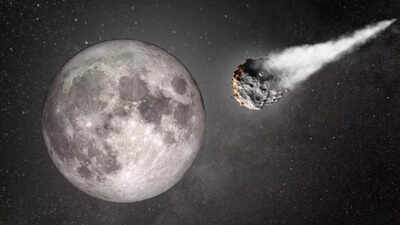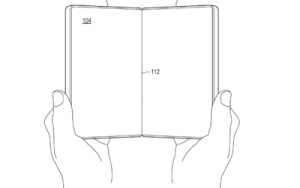NASA issues alarming warning: 'City killer' asteroid could strike Moon in 2032, threatening Earth’s satellites
A potentially devastating asteroid, ominously nicknamed a "city killer," is projected to collide with the Moon, raising concerns among scientists about potential repercussions for Earth. While asteroid 2024 YR4 is no longer considered a direct threat to our planet, NASA estimates a 4.3% probability of it impacting the lunar surface on December 22, 2032.
If the asteroid hits, the resulting explosion could eject approximately 10,000 tonnes of lunar debris into space. Earth's gravitational pull could then draw a significant portion of this debris into orbit, posing a serious risk to crucial satellites and infrastructure.

Simulations Indicate Historic Lunar Impact
Dr. Paul Wiegert, from the University of Western Ontario, conducted simulations revealing the 60-meter diameter asteroid could strike the Moon at speeds exceeding 29,000 mph. This impact is likely to create a crater 0.6 miles wide, potentially marking the largest lunar collision in over 5,000 years. While the Moon would bear the direct impact, the primary concern revolves around the debris propelled into space.
Earth in the Potential Line of Fire
Dr. Wiegert's team estimates that 10% to 30% of the ejected lunar material, ranging in size from 0.1 to 10 millimeters, could be drawn towards Earth by its gravity. Although seemingly small, these high-speed fragments could cause significant disruption by damaging or disabling satellites. "We were a little bit surprised at the possibility of there being a substantial amount of material at the Earth," Dr. Wiegert told New Scientist.
Potential Decade's Worth of Satellite Damage
Simulations suggest this space shrapnel could increase particle impact rates by a factor of 10 to 1,000 above normal levels, potentially causing satellite failures across multiple orbits. Dr. Wiegert cautions that systems like SpaceX's Starlink and other satellite constellations could experience "hundreds to thousands" of micro-impacts. This could lead to widespread communication blackouts and GPS malfunctions.
Risks to Lunar Missions and Astronaut Safety
The threat extends beyond Earth. NASA's upcoming Lunar Gateway space station and Artemis lunar missions could also be jeopardized. Rovers, landers, and even astronauts on or near the Moon could be exposed to debris traveling at lethal speeds. A 1mm particle could damage solar cells or pierce space suits, while larger fragments up to 10mm could breach spacecraft interiors.
Call for Coordinated Space Response
Professor Mark Burchell of the University of Kent emphasized the severity of multiple simultaneous satellite failures. "A lot of satellites failing at once is worse than occasional failures spread over a decade," he stated, emphasizing that simultaneous outages would strain resources and emergency response systems. Preventive strategies and shielding technologies may become critical priorities.
Although the current risk of impact is calculated at 4.3%, NASA and other international agencies are actively monitoring asteroid 2024 YR4. Initial observations by the James Webb Space Telescope helped rule out an Earth-bound strike, but the trajectory towards the Moon will continue to be reassessed as new data becomes available. Scientists concur that while the event is not certain, preparing for potential consequences is crucial.
Newer articles
Older articles
-
 How do graphic designers convert JPG to PDF (Portable Document Format)?
How do graphic designers convert JPG to PDF (Portable Document Format)?
-
 Priyanka Chopra reveals daughter Malti Marie has started school in New York: 'Her schedule is even crazier than mine'
Priyanka Chopra reveals daughter Malti Marie has started school in New York: 'Her schedule is even crazier than mine'
-
 Mahbub Anam replaces Faruque Ahmed as new BPL chairman
Mahbub Anam replaces Faruque Ahmed as new BPL chairman
-
 This new AI tool can help you book train tickets, get refunds and check details on IRCTC website and app
This new AI tool can help you book train tickets, get refunds and check details on IRCTC website and app
-
 Salman Khan reveals struggle with AVM and brain aneurysm on Kapil Sharma Show: Know what AVM is, its causes, and why it's so serious
Salman Khan reveals struggle with AVM and brain aneurysm on Kapil Sharma Show: Know what AVM is, its causes, and why it's so serious
-
 Karisma Kapoor's ex-husband Sunjay Kapur's alleged last rescue clip shows him getting CPR on the ground - WATCH VIDEO
Karisma Kapoor's ex-husband Sunjay Kapur's alleged last rescue clip shows him getting CPR on the ground - WATCH VIDEO
-
 Mom-to-be Malvika Raaj shares dreamy pictures from her 'Godh Bharai' ceremony with Guruji Satsang
Mom-to-be Malvika Raaj shares dreamy pictures from her 'Godh Bharai' ceremony with Guruji Satsang
-
 Twitter bans over 5 lakh accounts in India, here's why
Twitter bans over 5 lakh accounts in India, here's why
-
 Microsoft plans to take on iPhone and Android smartphones with this new device
Microsoft plans to take on iPhone and Android smartphones with this new device
-
 Government issues warning for these Android smartphone and tablet users
Government issues warning for these Android smartphone and tablet users